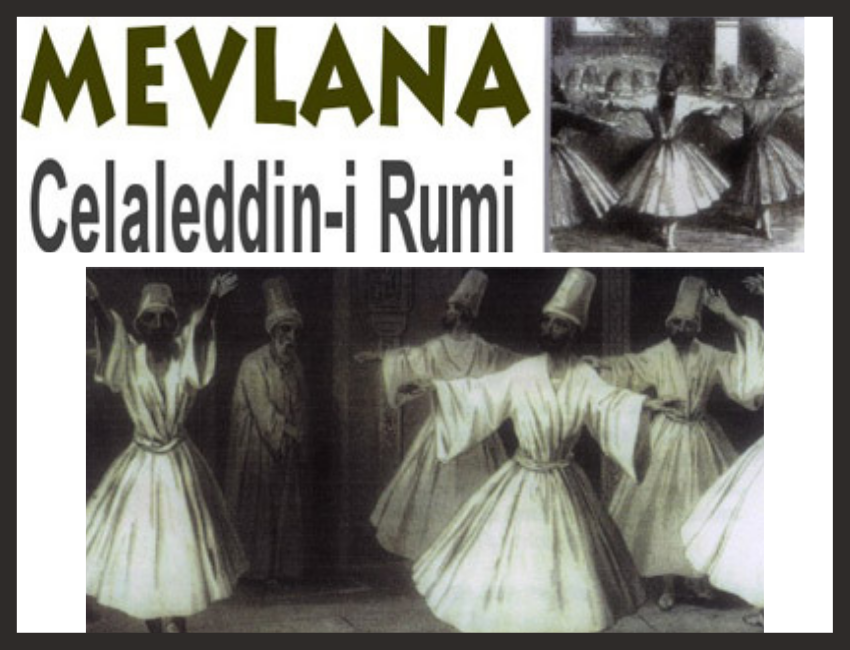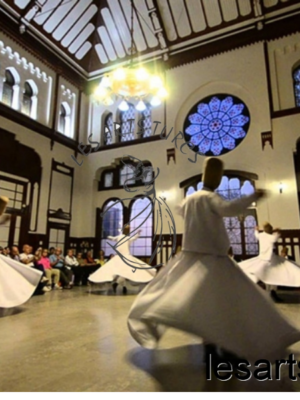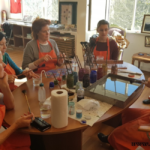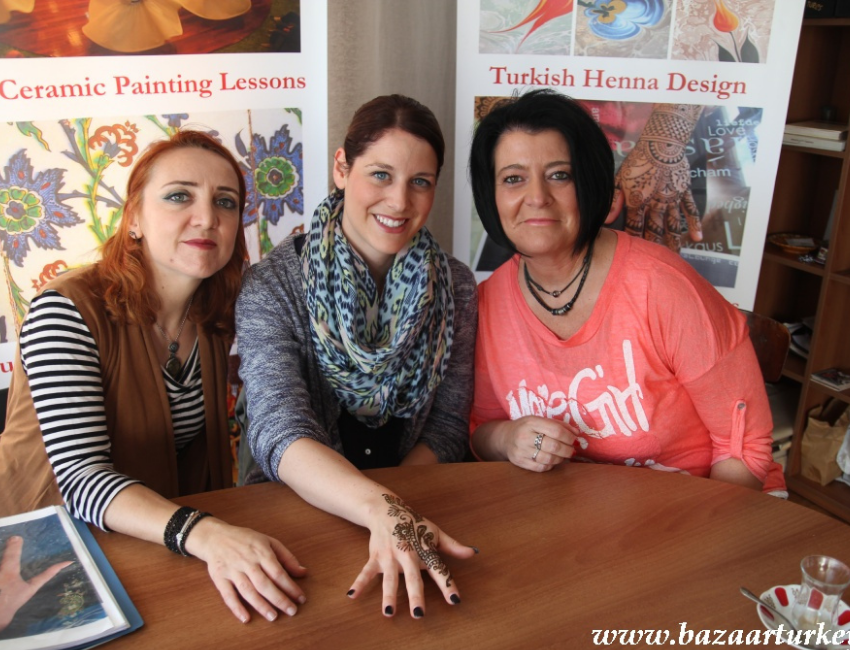The great Turkish philosopher and poet Mevlana Celaleddin-i Rumi was commemorated on the 729th anniversary of his death with ceremonies held on 10-17 December in Konya. During the special “Mevlana Week” a series of conferences, meetings, panels and theatrical performances were held to promote various aspects of Mevlana’s life. As a result of the philosophies of Mevlana, Hacı Bektaş-ı Veli, Yunus Emre and other spiritual leaders, an atmosphere of peace has provided in Anatolia, the cradle of civilization. Mevlana can be thought of as not only a great mystic, poet and philosopher, but also one who demonstrated great tolerance for people of all faiths.
Every December foreign and Turkish tourists go to Konya to commemorate the death of Mevlana Celaleddin-i Rumi, who died on December 17, 1273. He is better known as the founder of the order of the Whirling Dervishes.
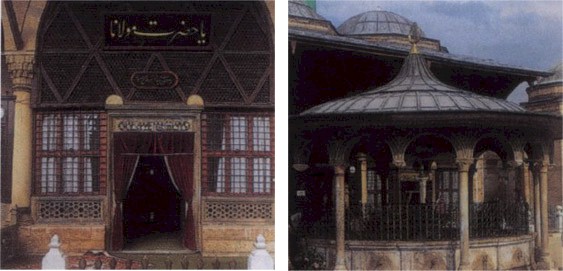
Mevlana was born in 1207 in Bakh (in present day Afghanistan). Mevlana’s father, Bahaddin Veled, left his homeland to escape the persecution of the Moguls. He first went with his family to Mecca and Medina and then to Asia Minor, seeking protection and asylum. Finally the family arrived in Konya in 1228 at the invitation of the Seljuk Sultan Alaeddin Keykubat. Bahaddin Veled, known as the “chief of all the learned” in Konya, became highly respected among the Seljuks. When he died in 1231, his son Mevlana was 24 years old. After Bahaddin’s death, his followers and students began to gather around Mevlana. They regarded him as the sole intellectual and spiritual heir, and a source of inspiration. In the following years, Mevlana became a teacher in the schools of Konya. As a scholar and theologian, he became even more popular than his father.
In 1244 Mevlana met the dervish Şems-i Tebriz, or Shemseddin of Tabriz. This meeting marked the beginning of a great mystic love between the two men. The influence of Shemseddin changed the once sober-minded theologian, Mevlana, into an ecstatic mystic. He neglected his work in order to have meditative sessions with Shemseddin, which often lasted weeks.
Mevlana’s family and also his students and disciples disapproved of this relationship. Shemseddin finally had to flee from Konya. Mevlana suffered greatly and tried all ways to locate him. In the end Mevlana’s sons brought Shemseddin back to Konya. However after his return, the attitude of Mevlana’s family and of his disciples toward Shemseddin did not change. Around 1247 he disappeared again and was never found. Speculations indicate, that he might even have been murdered.
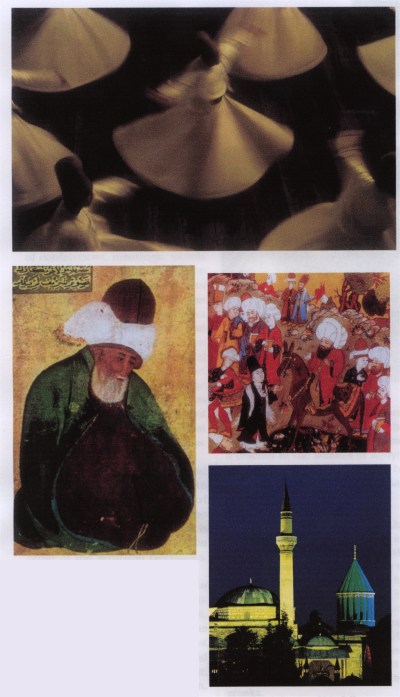
After Shemseddin disappeared, Mevlana chose Selahaddin Zerkubi as his spiritual confidant until he died 10 years later. Zerkubi was succeeded by Hüsameddin Çelebi, who was of Kurdish origin. Mevlana dictated his major work. This six-volume work, known as the “Mesnevi” consists of 26,000 verses. It begins with the words, “Listen to the reed flute — talking about separation..”. The reed flute (ney) plays a special role in the ritual of the Mevlevi order. The Mesnevi, a masterpiece of Islamic mystic literature was written in verse, and included philosophical, mystical and spiritual messages. On December 17, 1273, Mevlana Celaleddin-i Rumi died in Konya.
The ritual dance of his followers, more commonly known as the Whirling Dervishes, symbolizes a release from earthly ties, which liberates the soul and prepares it for union with the divine.
The dance consists of three parts, which represent the stages of reaching, seeing, and uniting with God. In the first stage, the dancers whirl three times accompanied by the mournful sound of the ney. During the second part, they remove their coats. This symbolizes the release of the soul from earthly concerns. Then they slowly begin to whirl with their right hands palms up and left hands palms down. This gesture indicates: “What we receive from God we give to man, while we have nothing ourselves”.
Their whirling movement represents the earth revolving on its axis and their rotation around the hall symbolizes the earth orbiting the sun. In the final part of the dance, the sheik enters, the rhythm becomes more rapid and the dancers are more frenzied. Then the flute signals the moment of man’s union with God.
Actually Mevlana did not found the Mevlana order. It was established in his name after his death by his son Sultan Veled, himself an important poet. The Mevlevi sect has lost its former importance. Only in December Konya becomes the center of the Mevlana celebrations.
Nearly 10,000 Tourists visit the Mevlana Museum in Konya
Nearly ten thousand Turkish and foreign tourists visited the Mevlana Museum in Konya during Mevlana Week. Curator Erdoğan Erol said that the number had increased considerably this year. Mevlana devoted himself to the pursuit of Sufi mysticism, in which field he was justly regarded as a supreme master. He was the spiritual founder of the Mevlevi order of whirling dervishes. His most important work, as mentioned above, is the Mesnevi, a vast compendium of Sufi lore and doctrine, interspersed with fables and anecdotes. It is especially remarkable for its insight into the laws of physics and psychology. Second to this is the Divan-ı Şems-i Tebriz, a collection of lyric poems (gazels) dedicated to his spiritual guide, Shemseddin of Tabriz.

